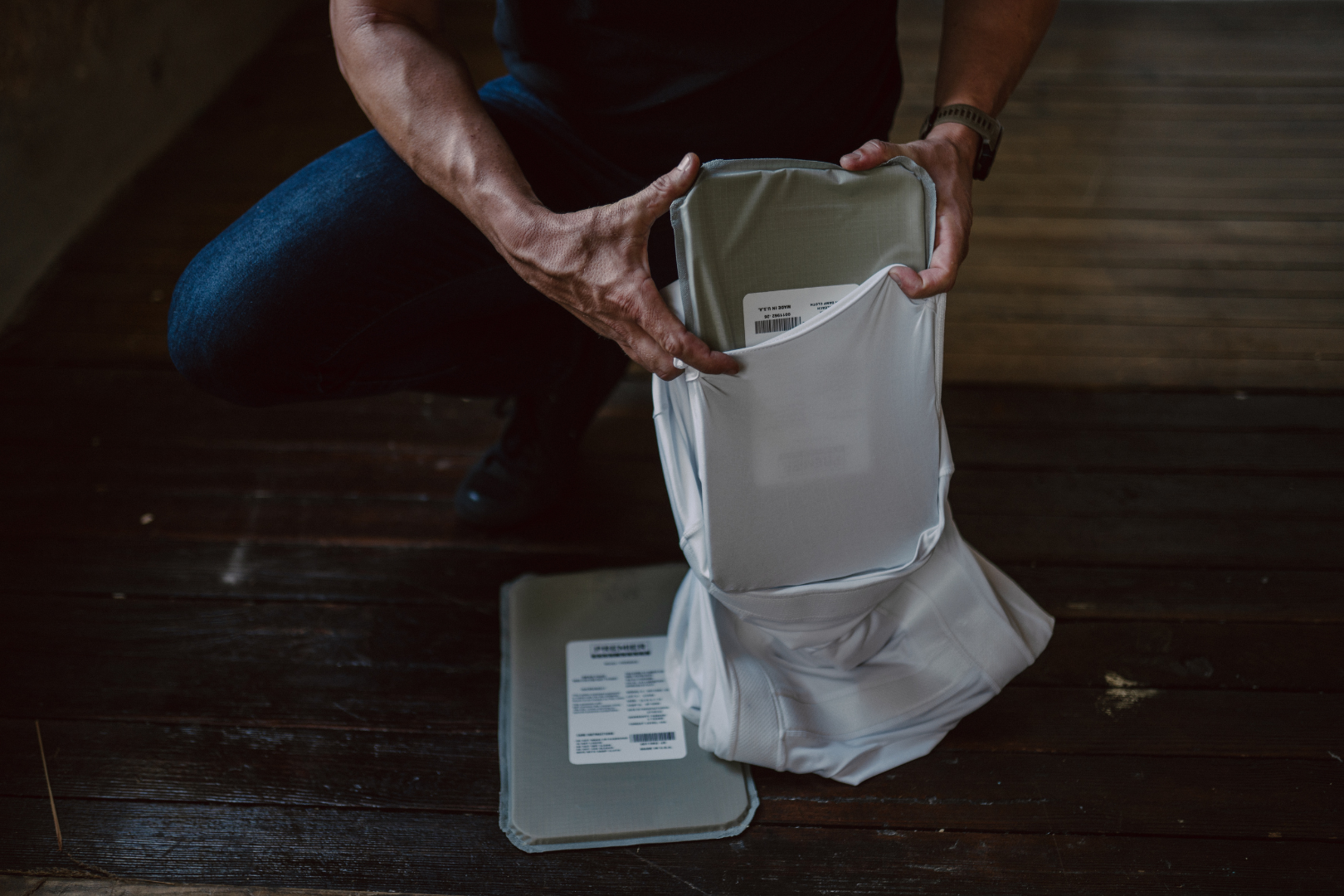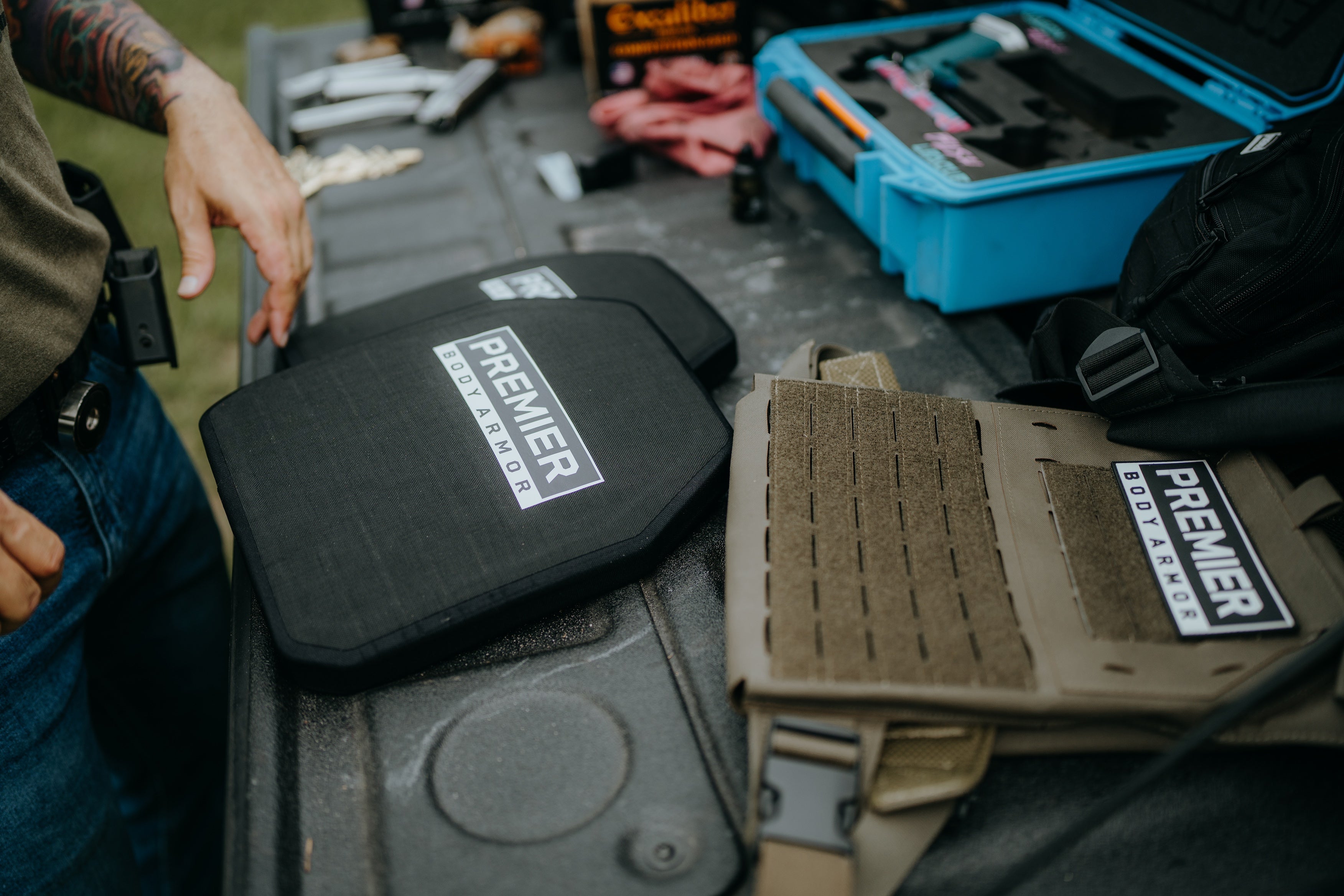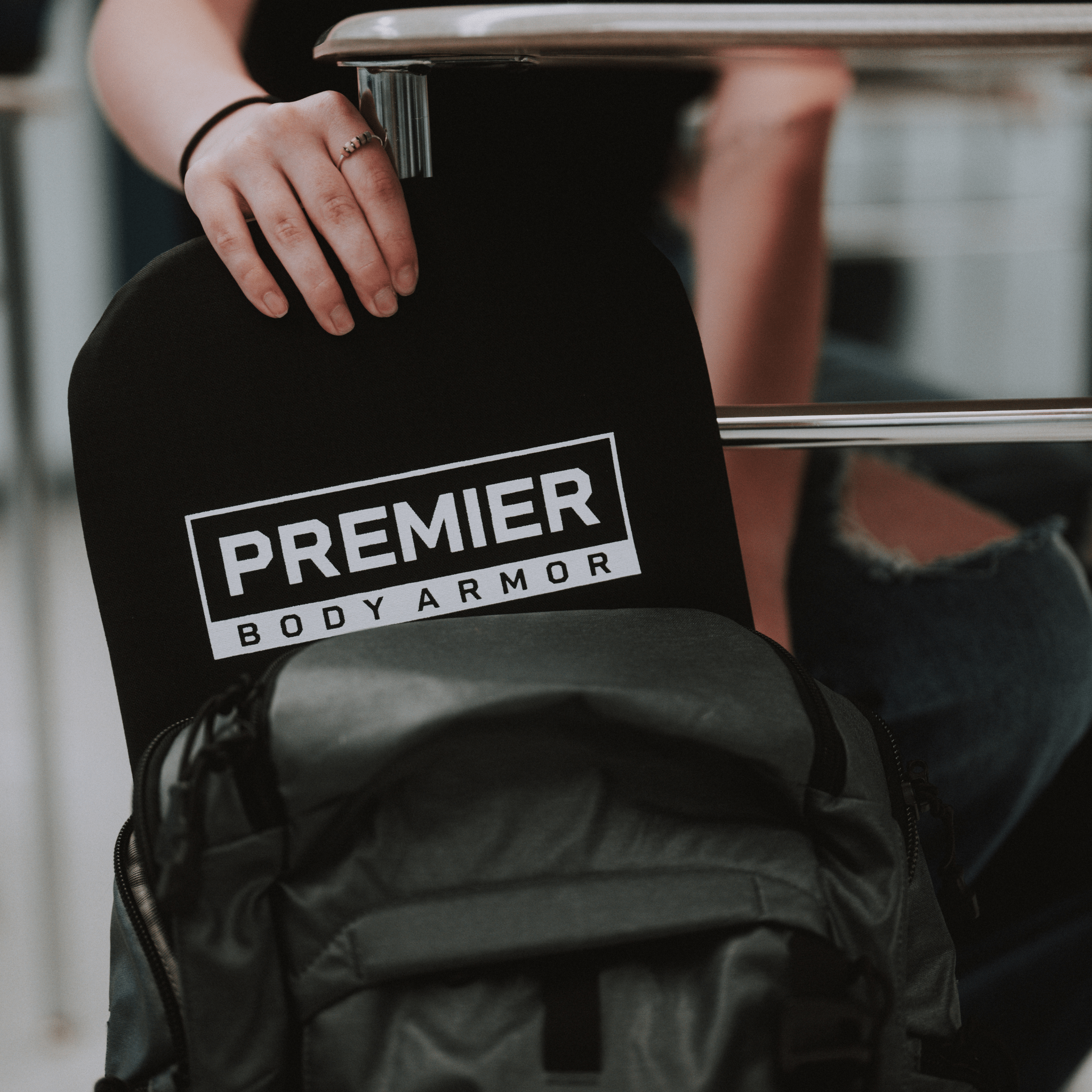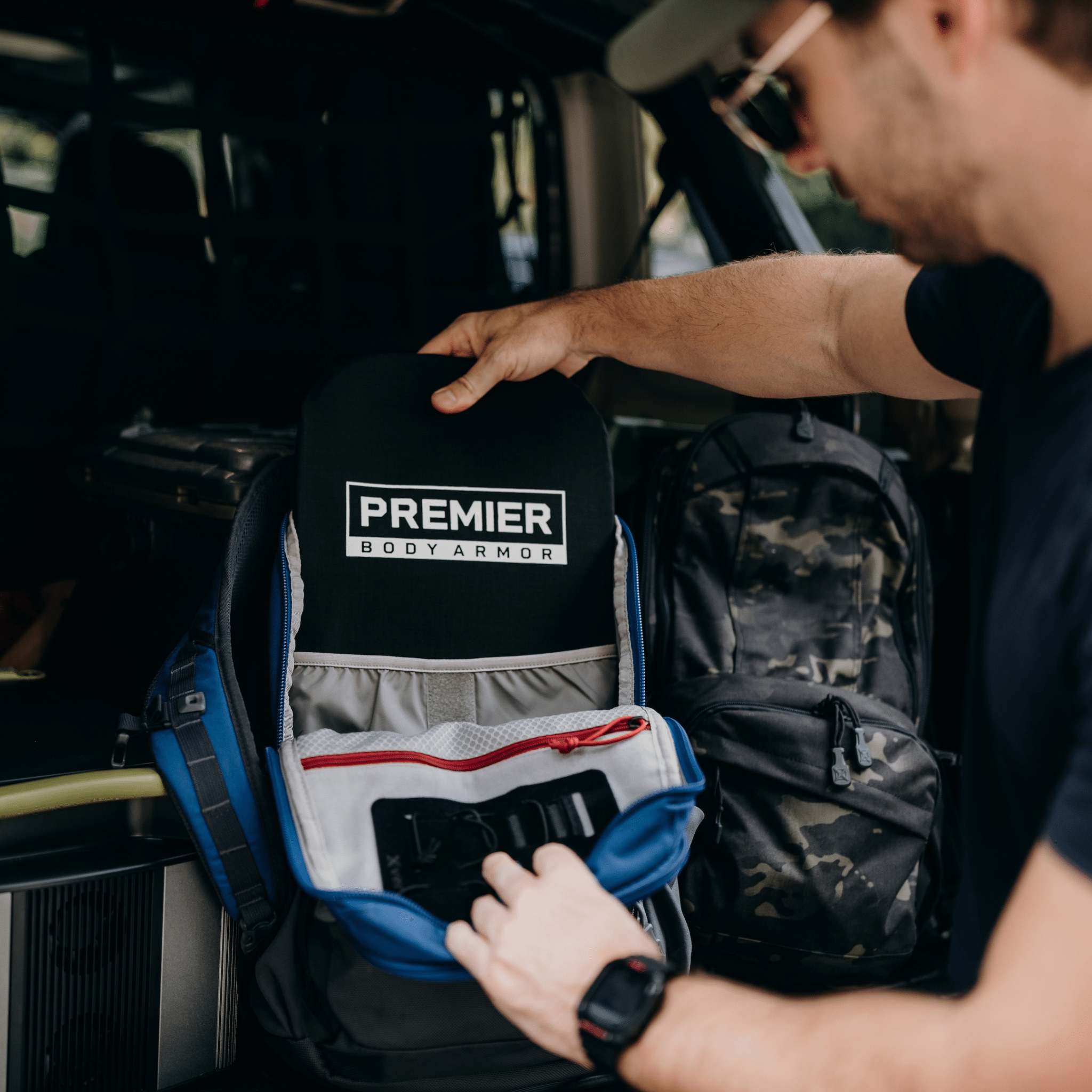How To Clean Your Body Armor Without Damaging It
How to Clean Body Armor Plates
Before cleaning your plates, first check whether they’re made of ceramic, steel, polyethylene, or another ballistic material. Different plate materials call for different care methods, especially if they feature ballistic nylon or a protective polyurea coating. When in doubt, consult the manufacturer’s instructions. Always clean the plates separately from the plate carrier, as the procedures differ.

Start by gently removing surface dirt with a soft microfiber towel or non‑abrasive sponge and cold water. Many hard armor plates come with a water‑resistant coating, which usually makes it easy to wipe them down. However, if your soft armor doesn’t have such coating (e.g., ballistic nylon), keep in mind that soaking it could degrade the material. Avoid hot water or harsh chemicals (like bleach), which could compromise the effectiveness of your armor.
Never soak or fully submerge your plates, as excess water can seep into layers or adhesive materials and reduce integrity. Light stains are primarily cosmetic and won’t usually reduce the plate’s protective capabilities.
When drying, separate the armor from the plate carrier and lay your armor plates on a flat surface, away from heat sources or direct sunlight, as UV radiation can degrade ballistic materials. By keeping them on a flat surface indoors, you minimize unnecessary deformation and help prolong the life of your gear.
Hand Washing Body Armor Vests
Hand washing your soft body armor vest is crucial to maintain its protective capabilities. Most vests feature removable ballistic inserts, such as trauma plates or ballistic panels. Before washing, detach these components and clean them separately as recommended by the manufacturer. If your vest is an all-in-one design without removable panels, proceed with extra caution to avoid damaging internal layers.
Use a specialized body armor detergent instead of regular laundry soaps or bleach, which can weaken the fibers and reduce protection. Such detergents are formulated to remove sweat and odors without using harsh chemicals.
To wash, fill a sink or bathtub with cold water and add the specialized detergent. Submerge the vest carrier and gently agitate to help the detergent penetrate the fibers. Rinse thoroughly, then gently squeeze (never wring) out excess water.
Place the vest on a flat surface in a well‑ventilated area to dry, away from direct sunlight or heat sources. Do not machine wash or tumble-dry; the mechanical action and high heat can permanently damage the ballistic material. By following these steps, you ensure your vest retains its protective qualities for as long as possible, an essential step when you’re learning how to wash a bullet proof vest.
How to Handle Odors in Body Armor That Smell Bad
Body armor worn daily, especially by police officers pulling long shifts, can develop unpleasant odors from sweat and bacteria. The first step is to hand wash your vest using a specialized body armor detergent. This helps break down sweat residue and eliminates many odor‑causing microbes.
If odors linger, try using odor‑eliminating compounds like baking soda or activated charcoal. Simply place a small pouch of one of these near the vest for a few hours (or overnight). They help absorb and neutralize foul smells without risking chemical damage.
If you still notice strong odors, consider washing again, this time with an enzyme‑based detergent designed to break down organic materials. Throughout this process, avoid harsh chemicals like bleach, which can compromise the fibers of your vest. Following manufacturer instructions ensures you remove bacteria and keep the armor’s protective qualities intact.
Keeping Cool in Your Vest to Sweat Less
High temperatures and extended duty shifts can cause heavy perspiration under your vest, leading to unpleasant odors and frequent wash sessions. To combat this, consider preventative methods like a specialized cooling system.
By controlling sweat, you effectively minimize the moisture trapped against your vest, which helps protect it from mildew, lingering odors, and fiber degradation. Staying cool means you’ll spend less time deep-cleaning.
How to Clean an Outer Vest Carrier or Plate Carrier
Start by removing all armor plates and other removable accessories such as buckles, cummerbund armor, and other hardware from your outer vest carrier or plate carrier. Remember that the cleaning procedure for the plates themselves is different than for the carrier.
Industry best practices recommend hand washing your duty vest or patrol vest with cold water and a mild detergent. Avoid bleach, fabric softener, or heavily scented laundry soap, which can degrade the carrier’s material and reduce its protective capabilities. Likewise, dry cleaning or certain household odor sprays can damage ballistic nylon or other carrier fabrics.
If you’re strapped for time, a ballistic vest cleaner, sometimes labeled as a body armor cleaning spray, can help freshen your uniform carrier between washes. Always follow the manufacturer’s instructions for your specific carrier to prevent any unintended deterioration.
How to Dry Body Armor
Drying your body armor correctly is crucial to maintaining its protective qualities and extending its lifespan. After a hand wash, gently blot away excess moisture with a clean towel; avoid wringing or twisting, which can deform fibers. Lay the vest or carrier flat in a cool, well‑ventilated area. This positioning helps preserve the armor’s shape and prevents internal layers from shifting.
Keep your gear out of direct sunlight, as UV radiation can degrade ballistic materials. Do not use a dryer; high heat can warp plates, shrink fabrics, or break down adhesives. Similarly, dry cleaning should be avoided because of harsh chemicals that can compromise the vest.
Always ensure your body armor is fully dry before wearing or storing, as residual moisture can lead to mold, mildew, or odor issues.
How to Keep Police Vest from Smelling
For law enforcement professionals wearing a police vest day in and day out, odor can build up rapidly. Regular cleaning helps, but sometimes you need in‑between solutions.
One option is a body armor deodorant or bullet proof vest spray specially formulated to neutralize odors without harming ballistic fibers. Popular examples include Arrest My Vest, FunkAway, and Battle Sports Odor Spray. Using these products for deodorizing your duty vest can be a quick fix if you’re short on time or between shifts.
These sprays work by targeting bacteria and sweat residue, helping to keep your vest fresher for longer. While they can’t replace thorough washing, they are an ideal stopgap to limit bad smells and keep you more comfortable while on patrol.
Body Armor Cleaning Tips
Proper maintenance of your bulletproof vest or plate carrier is essential to preserve its life-saving capabilities. While cleaning itself isn’t difficult, overlooking key steps can degrade the armor. Below are some fundamental body armor cleaning tips to help you keep your gear in optimal condition.
- Read the Care Instructions
- Don’t soak your armor
- Spot-clean your armor with mild detergent
- Lay armor flat to dry
- Machine wash your carrier, unless manufacturer directions say otherwise
- Lay carriers flat to dry
Read the Care Instructions On Your Body Armor
Before any cleaning, consult the manufacturer’s manual or label. These instructions outline precisely which cleaning solutions are safe, whether your vest can handle submersion, and how to properly dry it. Different armor designs, especially if they include ballistic nylon or specialized protective coatings, may require unique care steps. Sticking to manufacturer guidelines is one of the easiest ways to avoid voiding warranties or inadvertently reducing your armor’s protective performance.
Don’t Soak Your Body Armor
Excessive submersion in water or cleaning solutions can weaken the adhesives and fibers that give your vest its ballistic properties. Whenever possible, spot-clean or gently hand wash with cold water, rather than letting the armor sit in water. Avoid using hot water, which can warp some materials or cause shrinkage. Prolonged soaking can also lead to mold or mildew growth if the vest doesn’t fully dry.
Spot-Clean Your Armor
For small stains or blemishes, rely on a soft cloth or non‑abrasive sponge with mild detergent and cold water. Use gentle, circular motions to lift dirt without grinding it further into the fabric. This approach is excellent if you don’t need a full wash but want to keep the exterior looking clean.
Avoid scrubbing aggressively, which can cause fraying or compromise the vest’s ballistic fibers. If in doubt, always test a small area first.
Hang Dry Your Body Armor
In most cases, laying your armor flat is ideal to maintain its shape. If space is limited, you can carefully hang dry it on a sturdy, wide hanger. Keep it in a ventilated spot, away from direct sunlight or high heat. UV rays and temperature extremes can degrade ballistic materials.
Avoid thin, wire hangers that might create pressure points or creases. By taking these precautions, you’ll help preserve the structure and effectiveness of your vest.
Closing
Properly caring for your body armor is more than just routine upkeep; it’s an investment in your personal safety. By following the steps outlined here - checking manufacturer guidelines, hand washing your carrier, and drying your plates correctly - you help preserve the protective qualities of your gear for the long haul.
Whether you serve in law enforcement, private security, or simply value an extra layer of protection, a little maintenance goes a long way in ensuring your armor is ready for whatever comes your way.
To find the right ballistic vest for you, check out our tactical and concealable vest options.










I have bought level IV plates for my carrier and they came fast and look to be of great quality! I recently bought the ballistic helmet and it also is great! Always a simple process with Primer Body Armour! Highly recommend!
I enjoy the wearing of both the 360 body armor and the everyday body armor. I work as a security officer so it important to be protected.
Leave a comment